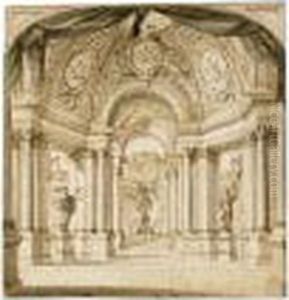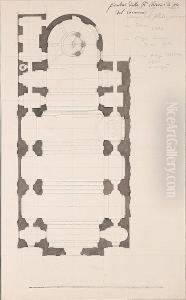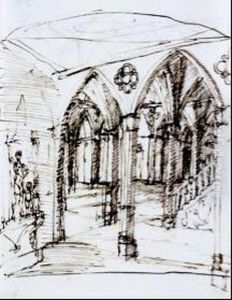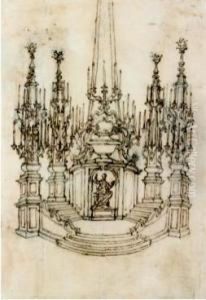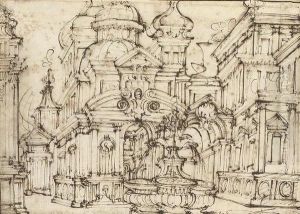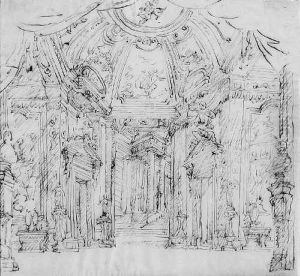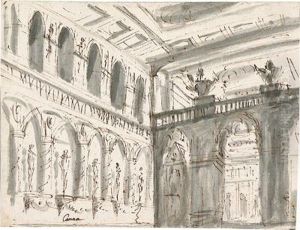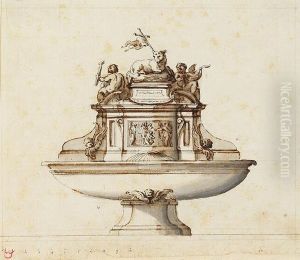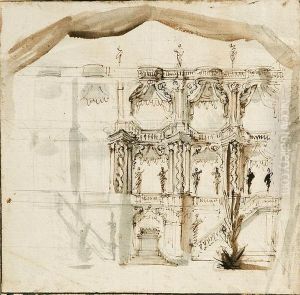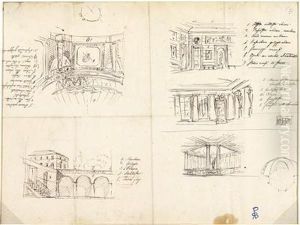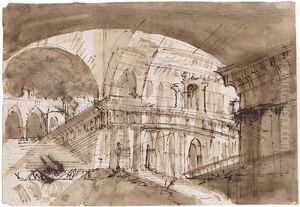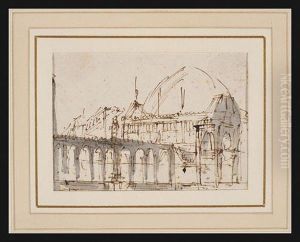Filippo Juvarra Paintings
Filippo Juvarra was an Italian architect and stage designer who became one of the leading exponents of the late Baroque or early Rococo style. Born in Messina, Sicily, on March 7, 1678, into a family of silversmiths, Juvarra was initially trained as a metalworker and draughtsman. His early interest in architecture was cultivated through his studies at the Roman College in Rome, where he was deeply influenced by the works of Gian Lorenzo Bernini and Francesco Borromini.
Juvarra's career took a significant turn when he moved to Turin in 1714, at the invitation of Victor Amadeus II of Savoy. In Turin, he was appointed as the chief architect of the Savoyard state, a position that enabled him to design and oversee the construction of numerous palaces, churches, and public buildings that helped reshape the city into a Baroque masterpiece. Among his most famous works are the Basilica of Superga, the Royal Palace of Turin, and the Hunting Lodge of Stupinigi.
His designs were characterized by their grandiose scale, dramatic use of light and space, and intricate decorative elements, all of which were intended to evoke emotional responses from viewers. Juvarra's work not only exemplified the Baroque's theatricality but also anticipated the lighter and more playful Rococo style that would follow.
Beyond his architectural achievements, Juvarra was also a prolific stage designer, creating elaborate sets for operas and court festivities. His background in metalworking and draughtsmanship infused his stage designs with a level of detail and inventiveness that was rare for his time.
Juvarra's influence extended beyond Italy, as his ideas and designs were circulated throughout Europe, inspiring a generation of architects. However, his career was cut short by his premature death in Madrid, Spain, on January 31, 1736, where he was working on a project for the Spanish court. Despite his relatively short life, Juvarra's legacy as a master of Baroque architecture and design remains influential to this day.
